Welcome to our guide on air compressor basics! If you’re working in an industry that requires power tools, you probably already know how important air compressors are. Air compressors are essential for various applications across various industries, from powering pneumatic tools to supplying gas for industrial processes. In this guide, we’ll cover everything you need to know about understanding air compressors and choosing the right one for your needs.
But before we dive into the nitty-gritty of compressor technology, it’s essential to emphasize the importance of choosing an efficient and reliable tool. Not only does it save you from potential accidents and injuries, but it also ensures that your work gets done faster and more effectively. So, whether you’re a DIY enthusiast or a professional tradesperson, let’s begin this journey to understand air compressors better!
How Do Air Compressors Work?
Understanding how air compressors work is essential for anyone using them efficiently and effectively. Air compressors work by converting power into potential energy stored in compressed air. Compressed air powers various tools and equipment, making them essential to many industries.
There are two main types of air compressors: positive displacement compressors and dynamic compressors. Positive displacement compressors work by trapping air in a chamber and reducing the volume to increase the pressure. Dynamic compressors work by using rotating impellers to increase the velocity of the air and convert the kinetic energy to pressure.
Positive displacement compressors are further classified into reciprocating and rotary compressors. Reciprocating compressors use pistons to compress air, while rotary compressors use rotating screws or lobes. These compressors are best suited for applications where high pressure is required. On the other hand, dynamic compressors are better suited for applications where a large air volume is required at lower pressures.
| Positive Displacement Compressors | Dynamic Compressors |
|---|---|
| Reciprocating Compressors | Centrifugal Compressors |
| Rotary Compressors | Axial Compressors |
Understanding the differences between these two compressors is crucial in selecting the right compressor for your specific needs. Factors such as required capacity, pressure, and duty cycle should also be considered when selecting an air compressor.
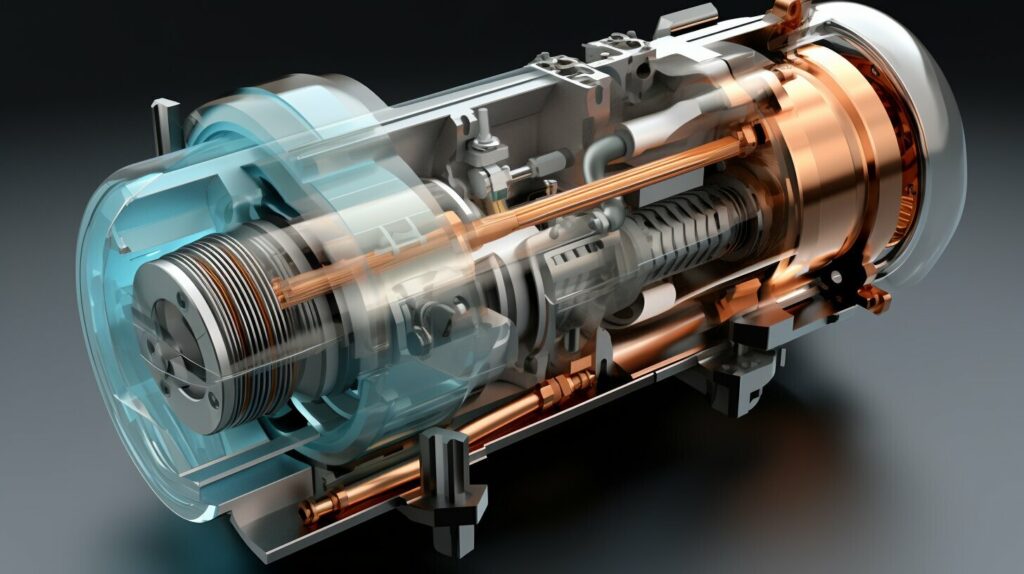
Understanding Positive Displacement Compressors
Positive displacement compressors work by trapping a specific amount of air inside a chamber and then decreasing the volume to compress the air. This type of compressor is often used in applications that require constant air volume and pressure. Positive displacement compressors can be categorized into reciprocating and rotary compressors.
Reciprocating Compressors use pistons to compress air. The piston moves back and forth inside a cylinder, compressing air. Reciprocating compressors are the most common compressors used in commercial and industrial applications. They are ideal for high-pressure applications and can be used for intermittent or continuous duty.
| Advantages | Disadvantages |
|---|---|
| It can generate a lot of heat | Can generate a lot of heat |
| Can handle large volumes of air | Require regular maintenance |
Rotary Compressors compress air by trapping it between two spinning rotors. As the rotors spin, the air is compressed and flows through the compressor. Rotary compressors are often used in applications where a constant air flow is required, such as refrigeration and air conditioning systems. They are typically more compact and lighter than reciprocating compressors.
| Advantages | Disadvantages |
|---|---|
| More compact and lightweight | Not suitable for high-pressure applications |
| Quieter operation | Can be expensive |
Positive displacement compressors have several advantages over dynamic compressors, including the ability to handle varying pressure ratios, deliver a constant air flow, and operate at higher efficiencies. However, they require regular maintenance and can generate more heat than dynamic compressors. Understanding the differences between positive displacement and dynamic compressors is crucial in selecting the right compressor for specific applications.

Exploring Dynamic Compressors
Dynamic compressors are essential in many industrial applications where high volumes of compressed air or gas are required. These compressors use rotating impellers to compress and increase the air or gas pressure.
Dynamic compressors work by converting kinetic energy into pressure. The impellers rotate at high speeds, drawing in air or gas and accelerating it to a high velocity. The accelerated air or gas then passes through a diffuser that converts the kinetic energy into pressure.
Dynamic compressors are particularly effective in high-pressure applications and can achieve compression ratios of up to three times atmospheric pressure.
There are two primary types of dynamic compressors: centrifugal and axial flow compressors. Centrifugal compressors use a radial design and are best suited for applications that require high flow rates but relatively low compression ratios. Axial flow compressors, on the other hand, use a more axial design and are ideal for applications that require high compression ratios but lower flow rates.
Compared to positive displacement compressors, dynamic compressors have several advantages. They can handle larger volumes of air or gas and are more energy-efficient, making them a popular choice in large-scale industrial applications. However, dynamic compressors can be more complex and require more maintenance than positive displacement compressors.
Considering using a dynamic compressor for your application, it’s important to consider factors such as required flow rate, pressure, and efficiency. Choosing the right type of dynamic compressor can help you achieve optimal performance and reduce maintenance costs in the long run.
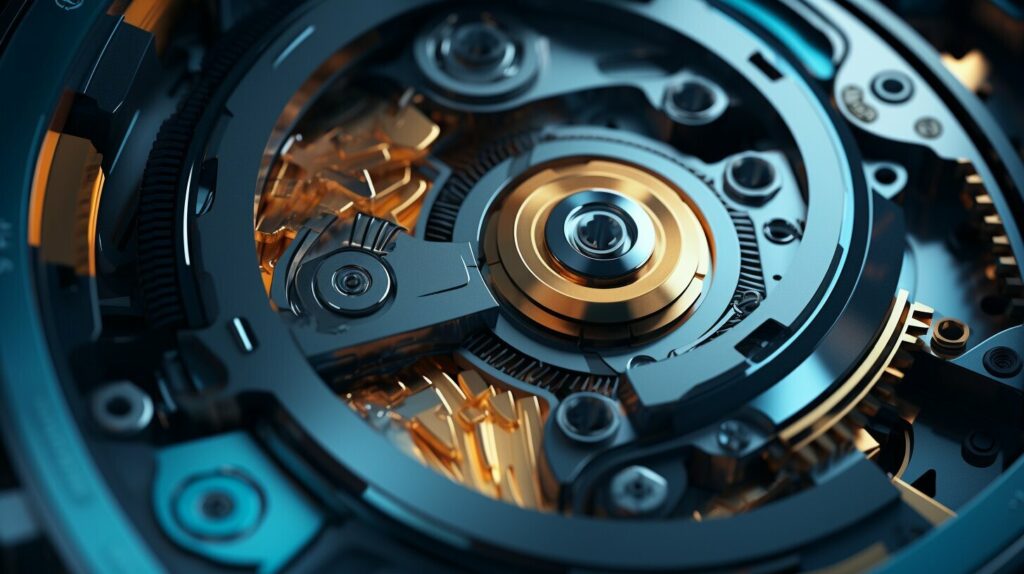
Factors to Consider in Air Compressor Selection
Choosing the right air compressor can be challenging, but it’s important to consider several factors to ensure optimal performance and efficiency. Here are some key factors to consider:
| Factor | Description |
|---|---|
| Required capacity | Consider the amount of air your tools or equipment require. Determine the amount of airflow required, measured in cubic feet per minute (CFM). |
| Pressure | Consider the required pressure to operate your tools or equipment efficiently. This is measured in pounds per square inch (PSI). |
| Duty cycle | Determine how often the compressor will be in use. Consider the amount of time it will need to operate continuously without overheating. |
| Performance | Consider the compressor’s horsepower, efficiency, and power source. A more efficient compressor will ultimately save you money on energy costs. |
Considering these factors, you can choose the right air compressor for your specific needs. It’s important to remember that selecting an air compressor with too little capacity or pressure can lead to decreased efficiency and performance while selecting a compressor with too much capacity can result in wasted energy and resources.
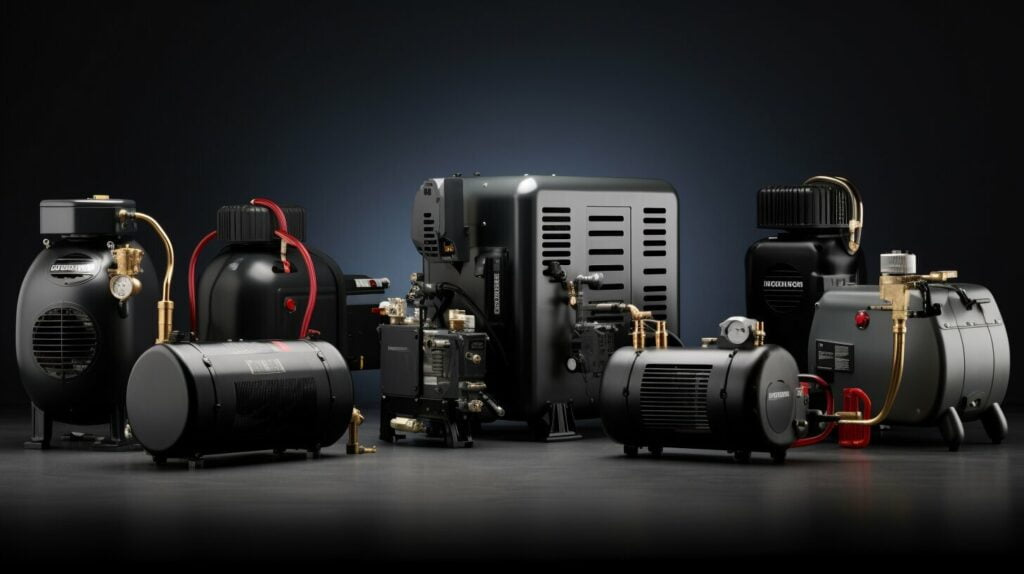
Different Types of Air Compressors and Their Applications
Various types of air compressors are available, each with its own advantages and disadvantages. Choosing the right type of compressor depends on the specific application and requirements. Below are some common types of air compressors and their respective uses:
| Type of Compressor | Advantages | Disadvantages | Applications |
|---|---|---|---|
| Reciprocating Compressor | Low initial cost, high efficiency, and easy maintenance | Produces pulsating flow, creates high vibration and noise levels, and limited capacity | Small automotive and woodworking shops, where the demand is intermittent and low-to-medium pressure is required |
| Rotary Screw Compressor | Consistent flow, low noise level, high efficiency, and longer lifespan | Higher initial cost and a need for regular maintenance | Large manufacturing operations, where demand is constant and medium-to-high pressure is required |
| Centrifugal Compressor | High flow rate, higher capacity, and efficient for high-pressure applications | Higher initial cost, limited pressure ratio, and sensitive to inlet conditions | Large industrial applications, such as gas and oil refineries, chemical plants, and power plants |
Reciprocating compressors are best for small-scale, intermittent tasks, while rotary screw compressors are more suitable for large-scale, continuous operations. Centrifugal compressors are used for high-pressure applications where precise, consistent flow is required. Therefore, it’s essential to consider the application, the airflow and pressure requirements, and the budget when selecting the most appropriate compressor.
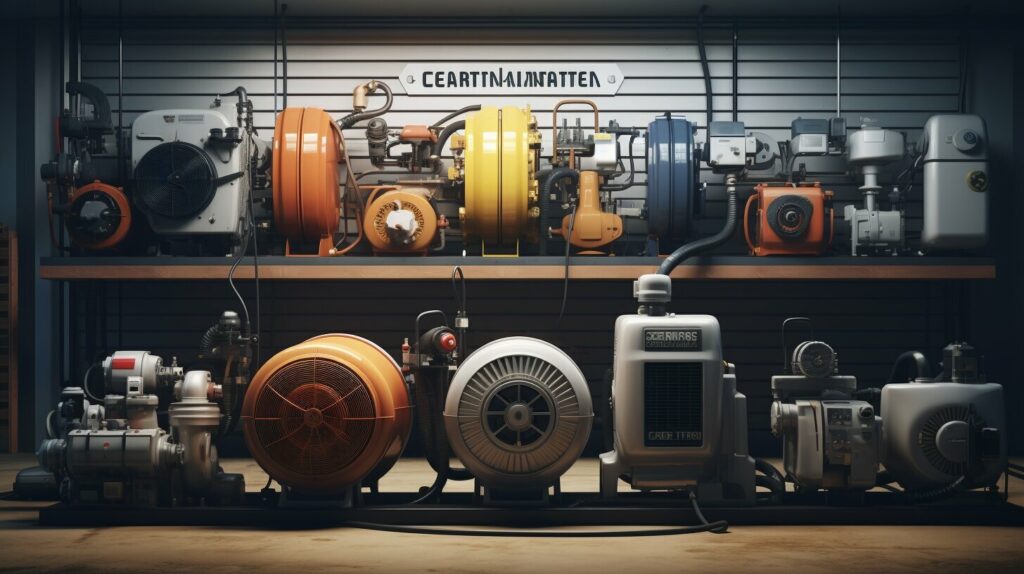
Achieving Efficiency and Reliability
Air compressors are essential tools in various industries, and maximizing their efficiency and reliability is crucial to achieving optimal performance. Regular maintenance and best practices can help prevent common issues and ensure long-lasting equipment.
One important factor to consider is compressor efficiency. Efficient compressors consume less power, lowering energy costs and reducing environmental impact. To improve efficiency, ensure proper lubrication, keep filters clean, and check for leaks regularly.
Maintenance is also crucial to prevent common issues that can impact reliability. Regularly inspect and clean the compressor’s components, including valves, hoses, and regulators. Replace worn-out parts promptly and use only high-quality replacement parts.
Preventive maintenance can also help prevent overheating, a common issue that can cause damage and downtime. Ensure that the compressor is not overloaded, which can cause excessive heat buildup, and check the cooling system regularly to prevent the compressor from overheating.
Following these maintenance tips and best practices can help ensure efficient and reliable air compressor operation while maximizing its lifespan.
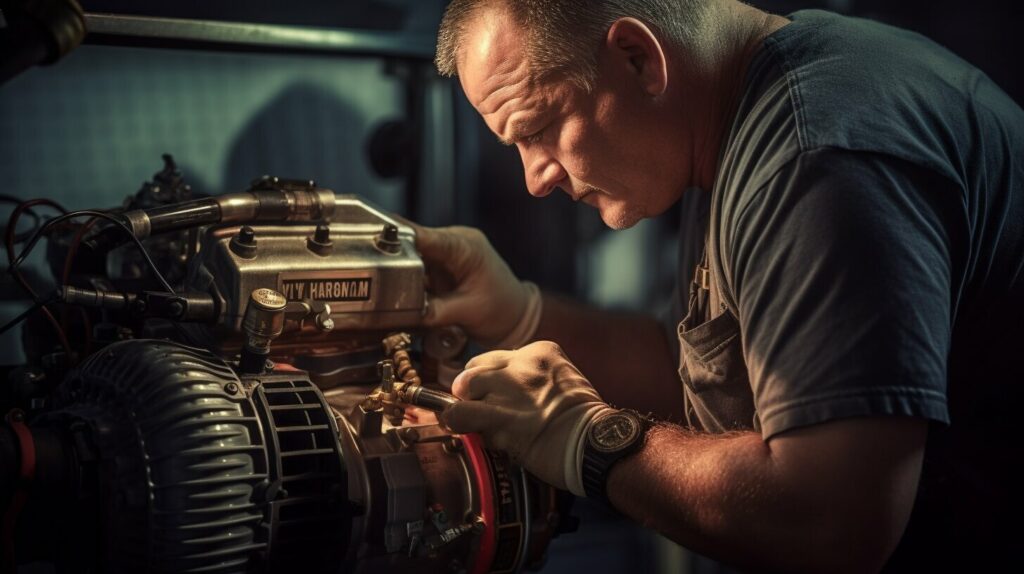
“Regular maintenance and best practices can help prevent common issues and ensure long-lasting equipment.”
Addressing Common Air Compressor Issues: Troubleshooting Tips
While air compressors are reliable and efficient tools, they occasionally experience issues affecting their performance. Here are some common problems you may encounter and troubleshooting tips to help you diagnose and fix them.
Leaking Air
If you notice that your air compressor is leaking air, check the connections between the compressor and the tools or hoses. Make sure they are tight and properly secured. Check for damage or wear in the compressor’s valves or seals if the issue persists. Replace any damaged components to prevent further leaks.
Inadequate Pressure
If your air compressor is not delivering the required pressure, check the air filter to see if it is clogged. A dirty air filter can reduce the airflow and cause inadequate pressure. You should also inspect the regulator valve and ensure it is properly adjusted. If the issue persists, check for leaks in the system and repair them accordingly.
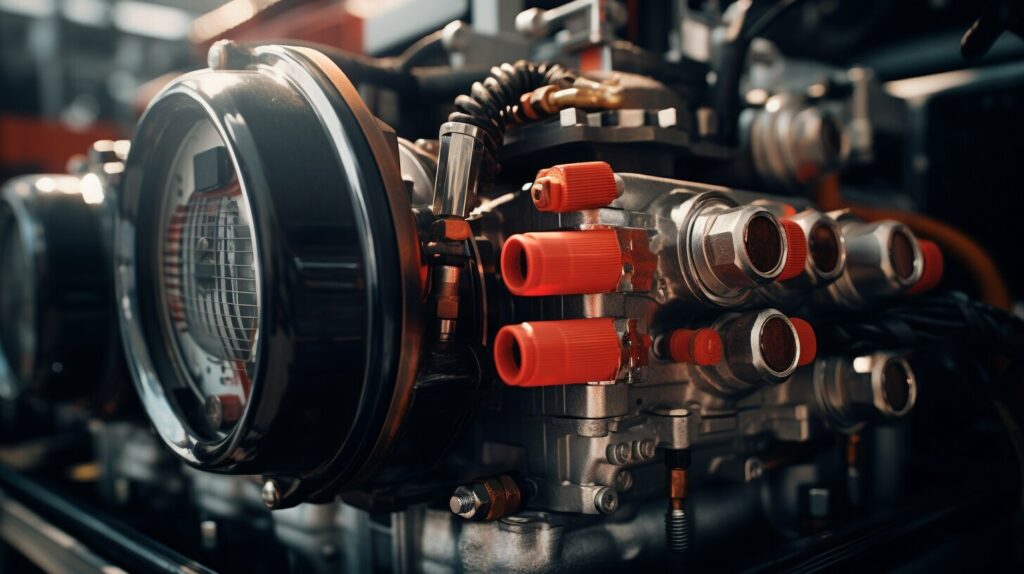
Excessive Noise
An air compressor that produces excessive noise may have loose or damaged components. Inspect the compressor for any loose screws, bolts, or fittings. You can also check the vibration pads to ensure they are properly installed and in good condition. If the issue persists, check the motor bearings for wear and replace them if necessary.
Overheating
If your air compressor is overheating, check the room’s ambient temperature and ensure it is within the manufacturer’s recommended range. To ensure they function properly, you should also inspect the cooling system, including the motor fan and radiator. If the issue persists, consider upgrading to a larger or more efficient compressor to prevent overheating.
Following these troubleshooting tips, you can quickly identify and resolve common issues with your air compressor. Remember to perform regular maintenance and inspections to prevent problems from occurring in the first place.
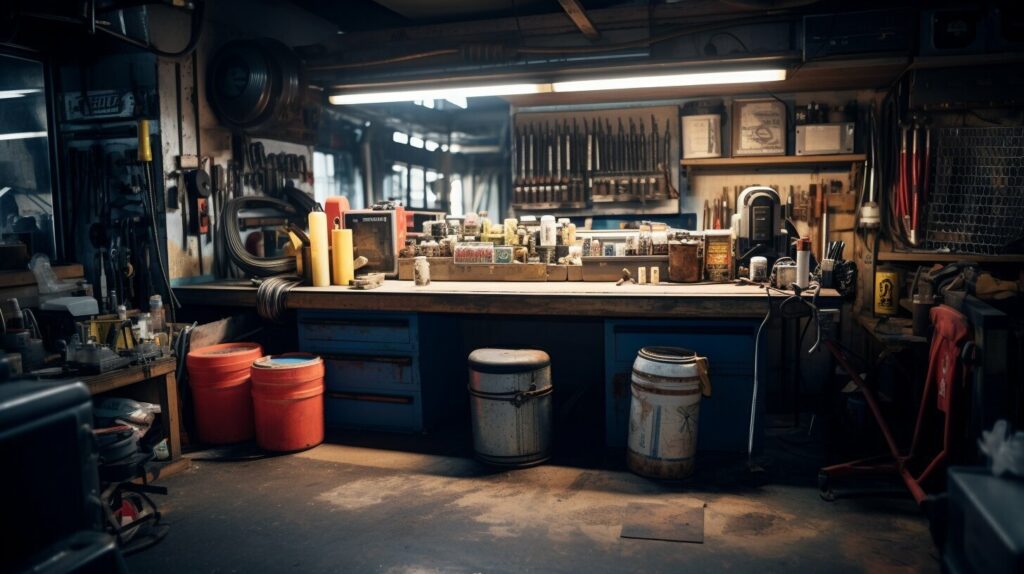
Conclusion
Choosing an air compressor that meets your needs is crucial to ensuring efficiency and reliability. By understanding the basics of air compressors, you can make informed decisions about which type of compressor is best for your application.
Remember to consider factors such as required capacity, pressure, and duty cycle when selecting an air compressor. It’s also important to prioritize maintenance and proper lubrication to maintain optimal performance and prevent common issues.
If you do encounter problems with your air compressor, don’t worry! Our troubleshooting tips can help diagnose and resolve issues quickly so you can return to work.
Thank you for reading our guide to air compressor basics. We hope this article has provided valuable insights into compressor technology and helped you select the right tool for your needs.
Frequently Asked Questions about Air Compressors
If you’re new to air compressors, you probably have many questions. Here are some frequently asked questions and their answers to help you better understand air compressors.
What is an air compressor, and what is it used for?
An air compressor is a machine that converts power into stored energy in compressed air. Compressed air can power tools and equipment, inflate tires and other objects, and many other applications.
What types of air compressors are available?
Many types of air compressors are available, including reciprocating, rotary screws, and centrifugal compressors. Each type has its advantages and is best suited for specific applications.
How do I choose the right air compressor for my needs?
To choose the right air compressor, consider the required capacity, pressure, and duty cycle. It’s also important to consider factors such as the compressor’s performance, efficiency, and power requirements. Consulting with a professional can also help you choose the right compressor.
How do I maintain my air compressor?
Regular maintenance is important to ensure your air compressor’s optimal performance and longevity. This includes checking and changing the oil, checking for leaks and worn parts, and cleaning or replacing air filters.
What are some common issues with air compressors?
Some common issues with air compressors include leaks, inadequate pressure, excessive noise, and overheating. Troubleshooting these issues can help you diagnose and resolve them quickly and effectively.
Can I use my air compressor for painting?
Yes, air compressors can be used for painting. However, be sure to choose the right type of compressor and ensure that it is properly maintained to avoid any contamination or damage to the paint.
Sources
- Understanding The Basics of Compressed Air Systems by David J. Herron, published in Energy Engineering, Volume 96, 1999 – Issue 2. This article provides an understanding of the basics of compressed air systems.
- Modelling of a new hydro-compressed air-storage system by Mohammad Ababneh & Adnan Ishtay, published in the International Journal of Sustainable Energy, Volume 37, 2018 – Issue 9. This article discusses the modelling of a new type of air-storage system.
- Neural-Network-Based Polynomial Correlation of Single- and Variable-Speed Compressor Performance by Ling-Xiao Zhao, Chun-Lu Zhang & Bo Gu, published in HVAC&R Research, Volume 15, 2009 – Issue 2. This article presents a neural-network-based polynomial correlation of single- and variable-speed compressor performance.

